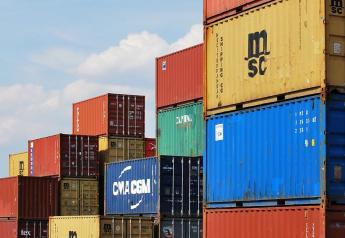Farmland Values Find Footing
Although the changes are modest, farmland values seem to be steady or improving. This is despite multiple years of low farm profitability, an upward trajectory of interest rates and an increase in farmers exiting the profession.
A turnaround is occurring in many regions, according to the 2017 second-quarter reports from four Federal Reserve banks. For instance, the Federal Reserve Bank of Dallas says values for all types of farmland have increased from 3% to 5%, and the Federal Reserve Bank of Chicago reports farmland values are up 1% from a year ago.
“This was the first year-over-year gain in three years,” says David Oppedahl, senior business economist for the Chicago Fed.
Still, state-by-state results are mixed. Illinois and Indiana values dropped 3% and 1%, respectively. Wisconsin is up 1% and Iowa is up 3%. The latter is key because Iowa was the first state to turn lower in late 2013.
While 2017 profits for row-crop farmers are predicted to be down from 2016, higher livestock revenues might have helped buoy land values in livestock-heavy Iowa and Wisconsin, Oppedahl says.
The Federal Reserve Bank of St. Louis reports quality farmland in the Southern Corn Belt slipped less than 1%, which follows a similar slim decline in the first quarter.
“This is not confirmation of a bottom, but it suggests market steadiness,” says Mike Walsten, consultant and columnist for LandOwner, a sister publication of Farm Journal. “Stabilization is the first stage in marking a low.”
In the Great Plains, values continued to decline alongside farm income and credit conditions. For the sixth consecutive quarter, cropland and ranchland values in the 10th District decreased from a year ago.
One positive sign is the number of farms for sale is limited, which props up the market, Walsten says. Rural bankers also report a slowing in the deterioration of financial conditions of their farm customers.
“This suggests farmers and lenders have adjusted to the sharp decline in net farm incomes and are cautiously optimistic they can work through repayment issues without forced farmland sales,” he adds. “The absence of a glut of stress-farm sales lets the market work through the negative picture.”
Market conditions are ripe for farmers and lenders to work through ongoing financial strains, which will support farmland prices, Walsten says. This assumes interest rates don’t spike, net farm income doesn’t fall sharply lower, farmers hold the line on adding debt and lenders stick with cash-flow rather than collateral lending.
“We see the farmland market as steady to slightly weaker through 2018 and possibly in 2019 followed by normal 4% annual gains,” he says.







